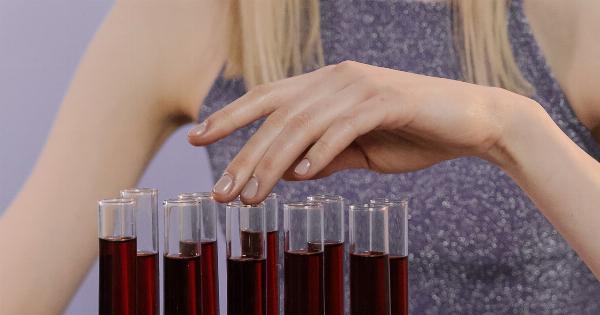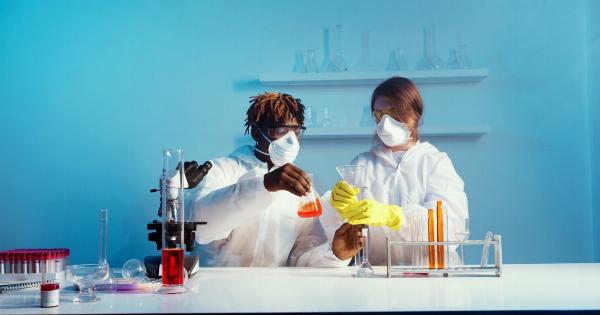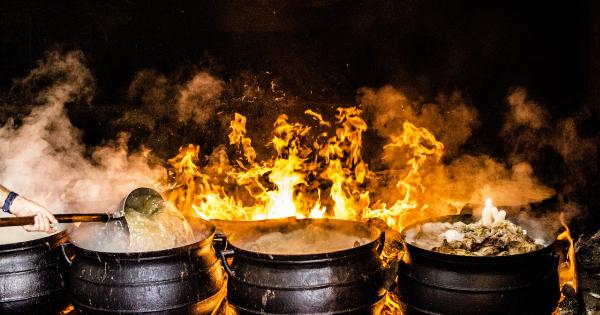When the skin is exposed to extreme heat or flames, it can result in burns of varying degrees. Understanding the processes that occur in the skin when burned is crucial for effective treatment and prevention of long-term complications.
This article explores the different stages of burn injuries and the corresponding physiological responses in the skin.
1. Types of Burn Injuries
There are three primary types of burn injuries:.
1. Superficial burns (first-degree burns): These affect the outermost layer of the skin, known as the epidermis. They often cause redness, pain, and minor inflammation.
2. Partial-thickness burns (second-degree burns): These penetrate through the epidermis and extend into the underlying layer of skin, known as the dermis. They lead to blistering, severe pain, swelling, and potential infection.
3. Full-thickness burns (third-degree burns): These are the most severe burns that extend through both the epidermis and dermis, damaging underlying tissues, such as muscles and bones.
Full-thickness burns often result in the loss of sensation due to nerve damage.
2. Immediate Response to Burn Injuries
When the skin is burned, an immediate response is triggered to protect the underlying tissues and initiate the healing process:.
a) Inflammatory Response: The body’s immune system activates to control potential infection and minimize further damage. Blood vessels surrounding the burn area dilate, increasing blood flow and bringing immune cells to the site of injury.
b) Fluid Shift: Burns can cause fluid and electrolyte shifts due to increased capillary permeability, leading to swelling and potential dehydration.
c) Pain and Sensation: Burn injuries are associated with significant pain due to the exposure of nerve endings. However, in severe cases, nerve damage might result in a loss of sensation.
3. Healing Process
The healing process following a burn injury can be divided into three overlapping stages:.
a) Inflammation: In this stage, damaged tissues are removed, and the wound is cleansed by specialized cells. The area becomes red, swollen, and warm due to increased blood flow. Immune cells eliminate any potential infection.
b) Proliferation: New blood vessels form to supply oxygen and nutrients to the wound. The skin begins to regenerate as specialized cells, known as fibroblasts, produce collagen.
Granulation tissue, which appears red and beefy, forms as the wound is rebuilt.
c) Remodeling: Over time, collagen is reorganized, and the wound contracts, reducing its size. The scar tissue gradually matures, becoming stronger and more functional. This process can take several months to complete.
4. Potential Complications
Burn injuries can lead to various complications, especially if not properly treated:.
a) Infection: Burned skin provides an ideal environment for bacterial growth. Prompt wound care and the use of antibiotics can help prevent infection.
b) Scarring: Scar tissue can form after burn injuries. This can restrict movement, cause itching, and affect the skin’s appearance. Techniques such as scar massage, pressure garments, and surgical intervention can help manage scarring.
c) Contracture: Severe burns can cause the skin and underlying tissues to tighten and restrict movement, resulting in contractures. Physical therapy, stretching exercises, and surgical interventions may be necessary to restore function.
5. Treatment and Prevention
Proper treatment of burns is essential for optimal outcomes:.
a) First Aid: Immediately after a burn injury, cool the affected area with cool (not cold) running water for 10-20 minutes. Avoid applying ice or adhesive products to the burn.
b) Dressings and Wound Care: Cover the burn with a sterile dressing to protect it from infection. Regularly clean the wound, apply antimicrobial ointments, and change dressings to promote healing.
c) Pain Management: Over-the-counter pain relievers or prescribed medications may be necessary to manage pain associated with burn injuries.
d) Preventive Measures: To prevent burn injuries, it is crucial to practice fire safety, use proper protective equipment when dealing with heat or chemicals, and adhere to workplace safety guidelines.
Conclusion
Understanding the processes in the skin when burned is essential for appropriate treatment and prevention of long-term complications.
From the immediate inflammatory response to the complex healing process, burns require proper care to minimize pain, scarring, and other potential complications. By following preventive measures and seeking prompt medical attention, the impact of burn injuries can be mitigated, leading to optimal healing and recovery.






























